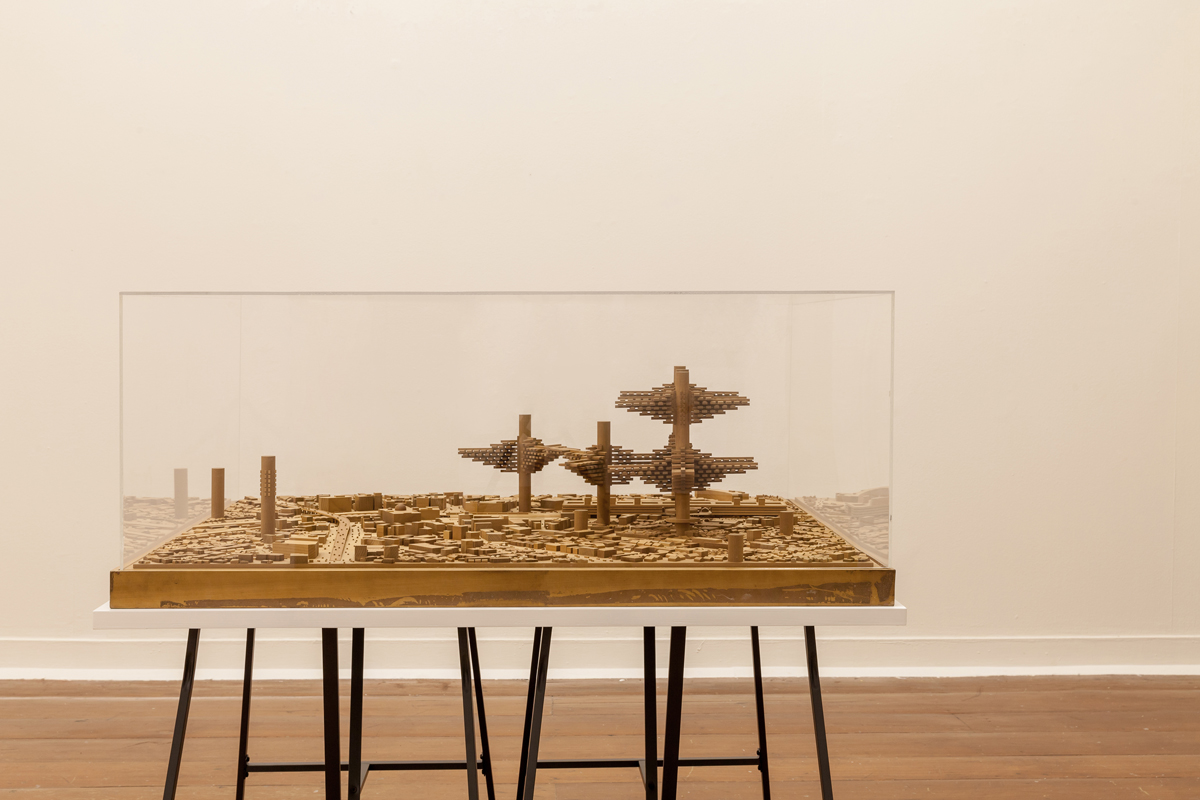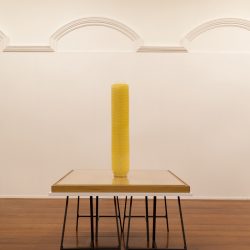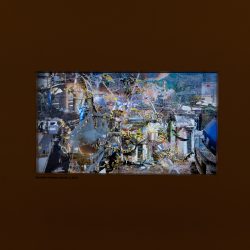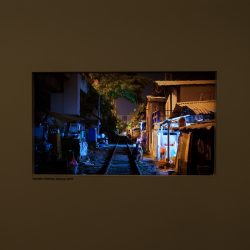WHY DO CITIES HAVE TO STRUGGLE AND WHAT FOR? STRUGGLING CITIES: FROM JAPANESE URBAN PROJECTS IN THE 1960S INTRODUCES VIEWERS TO ISSUES AND CONDITIONS SURROUNDING POSTWAR JAPANESE CITIES FROM TRAFFIC CONGESTION AND AIR POLLUTION TO RESIDENTIAL DILEMMAS, ETC.
These issues serve as the fundamental factors for urban experimental concepts that aim to develop people’s quality of life. The relationship between humans and technology is the core element of this particular series of concepts. The contents of the exhibition are categorized to be succinct and simple in order for viewers with no background knowledge about the issues to easily understand what is displayed. The presentation of information of such volume in a way that allows for viewers to not only comprehend but also remember and simultaneously connect all the dots together is a strong point of the exhibition, making it a must-see show for anyone who is interested in the stories and development of contemporary cities. The big picture that one is able to grasp from the exhibition will probably inspire many to dig deeper into the fascinating stories of Tokyo’s urban planning whether it be Kenzo Tange’s 1960, projects by Metabolism or Arata Isozaki’s City in the Air.

In addition to some very interesting comparative presentation of cities across the world and the time period of contemporary developments they share, films, animations and media art are incorporated into the exhibition’s storytelling to help depict more dimensional and diverse visions of the cities. The works range from Solaris by Tarkovsky and Mamoru Oshii’s groundbreaking Ghost in the Shell (1995) to Yasuhiko Uchihara’s photography in which photographic compositions are adjusted to interestingly communicate the contemporary world from his point of view. In addition, the exhibition’s small pamphlet served as a documentation of the featured contents, a solid source of knowledge and a starting point for further studies. And while this traveling exhibition has since 2010 made its way to the United States, Europe and Asia, the well-curated content contains all the basic information one should know and does its job of leading the content-oriented exhibition that ‘Struggling Cities’ is. With the flavor that may be too mild for some, the show is designed to be perfectly digestible as viewers linger on the food for thought it provides. If we look at the big picture, ‘Struggling Cities’ reflects quite clearly where the minds behind its making put their focus.
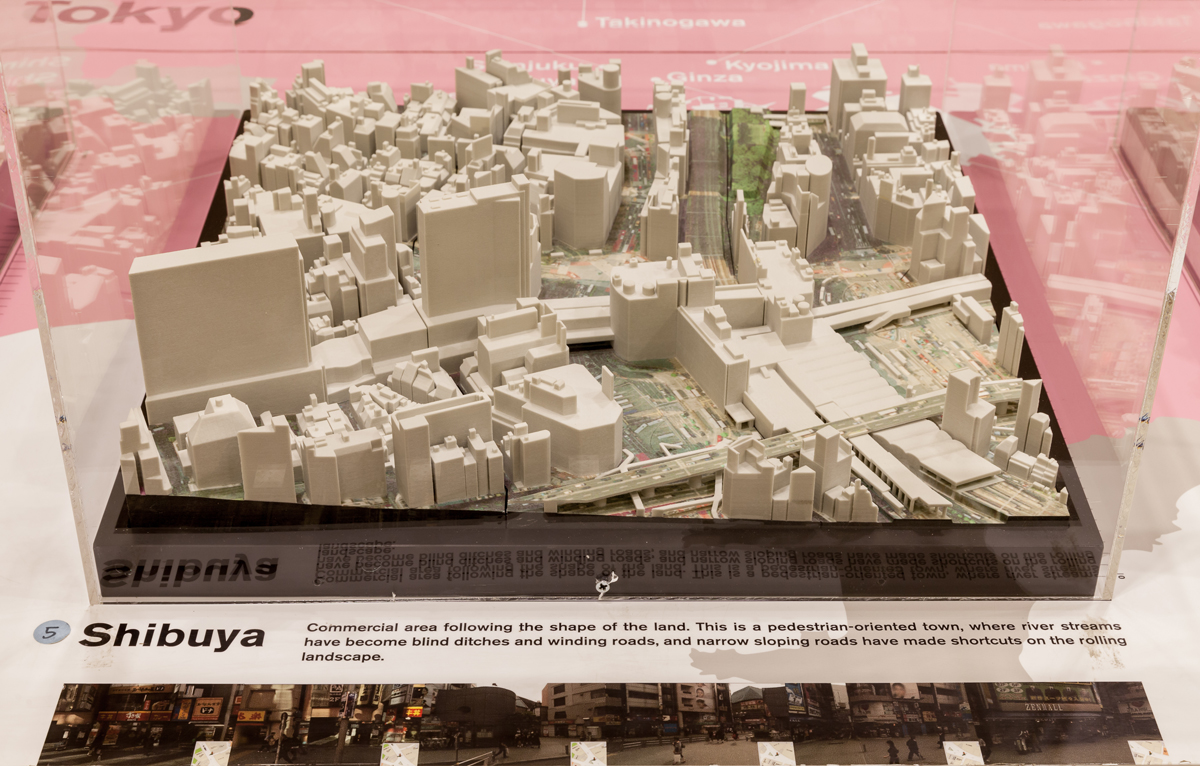
ทำไมเมืองต้องสู้ แล้วจะสู้ไปเพื่ออะไร นิทรรศการ “เมืองต้องสู้: โครงการผังเมืองของญี่ปุ่นในทศวรรษ 1960” (Struggling Cities: from Japanese Urban Projects in the 1960s) จะพาคนดูไปทำความรู้จักกับปัญหาและเงื่อนไขแวดล้อมต่างๆ ของเมืองช่วงหลังสงครามโลกครั้งที่สองในญี่ปุ่น ไม่ว่าจะเป็นสภาพการจราจรติดขัด มลพิษทางอากาศ ปัญหาที่อยู่อาศัย ฯลฯ ประเด็นเหล่านี้เองได้กลายมาเป็นปัจจัยพื้นฐานให้กับแนวคิดทดลองเกี่ยวกับเมืองในทศวรรษ 1960 เพื่อพัฒนาคุณภาพชีวิตของคนในสังคมให้ดีขึ้นโดยมีการปรับใช้ความรู้ที่คนเรามีต่อเทคโนโลยีเข้ามา ประเด็นเนื้อหาได้รับการจัดกลุ่มให้ดูกระชับและเรียบง่ายต่อการทำความเข้าใจสำหรับคนดูที่อาจไม่เคยได้ยินเรื่องราวเหล่านี้มาก่อน ซึ่งการเรียบเรียงข้อมูลให้ง่ายต่อการจำและปะติดปะต่อภาพในหัวได้อย่างรวดเร็วหลังดูนิทรรศการจบ เป็นจุดแข็งของนิทรรศการชุดนี้ที่ทำให้เราอยากจะแนะนำให้ใครก็ตามที่สนใจเรื่องเมืองร่วมสมัยได้ไปดูกัน เพราะภาพรวมที่ได้เห็นในงานน่าจะช่วยให้ใครหลายๆ คนเกิดอยากกลับไปหาอ่านเพิ่มเติมในเรื่องราวเกี่ยวกับผังเมืองโตเกียว-1960 ของ Kenzo Tange โปรเจ็คต์ของกลุ่ม Metabolism หรืองาน City in the Air ของ Arata Isozaki
คนดูในงานจะได้เห็นการเปรียบเทียบเมืองต่างๆ จากหลากหลายที่ในโลกในยุคเดียวกัน ทั้งยังได้เห็นสื่ออย่างภาพยนตร์ การ์ตูนอนิเมชั่น ศิลปะ สื่อที่ได้รับการคัดสรรมาใช้ประกอบการเล่าถึงวิสัยทัศน์ของเมืองให้มีมิติและแง่มุมที่หลากหลายมากขึ้น ไม่ว่าจะเป็นงานภาพยนตร์ Solaris ของ Tarkovsky หรือของ Mamoru Oshii เจ้าของผลงาน Ghost in the Shell (1995) ที่หลายคนคุ้นเคยดี หรืองานภาพถ่ายของ Yasuhiko Uchihara ที่มีการปรับแต่งองค์ประกอบภาพเพื่อสื่อสารถึงสภาวะของโลกร่วมสมัยที่เขาได้เห็นอย่างน่าสนใจ นอกจากนี้แล้ว หนังสือสูจิบัตรเล่มเล็กของงานยังทำหน้าที่ของการเป็นสื่อบันทึกความรู้เพื่อใช้เก็บมาทวนความจำ และช่วยนำทางเพื่อต่อยอดหาความรู้เพิ่มเติมได้เป็นอย่างดี ถึงแม้ว่านิทรรศการสัญจรระหว่างประเทศนี้จะเริ่มออกเดินทางทั้งในสหรัฐอเมริกายุโรป และเอเชียมาตั้งแต่ปี 2010 แต่ด้วยเนื้อหาที่ผ่านการเรียบเรียงมาอย่างดี มันจึงเป็นงานแบบที่มีเนื้อหามาเป็นตัวชูโรง มีเนื้อหาลงตัว รสชาติไม่จัดจ้าน เหมาะกับการเอาไปย่อยต่อระหว่างทางกลับบ้าน ในขณะที่การออกแบบนิทรรศการแบบเรียบเกลี้ยงอาจจะดูจืดไปนิดสำหรับใครบางคน แต่รับรองว่าเมื่อดูในภาพรวมแล้ว มันบ่งบอกว่างานนี้คนทำเลือกให้น้ำหนักกับอะไรในการทำงาน
TEXT: KANOKWAN TRAKULYINGCHAROEN
PHOTO: KETSIREE WONGWAN
jfbkk.or.th

